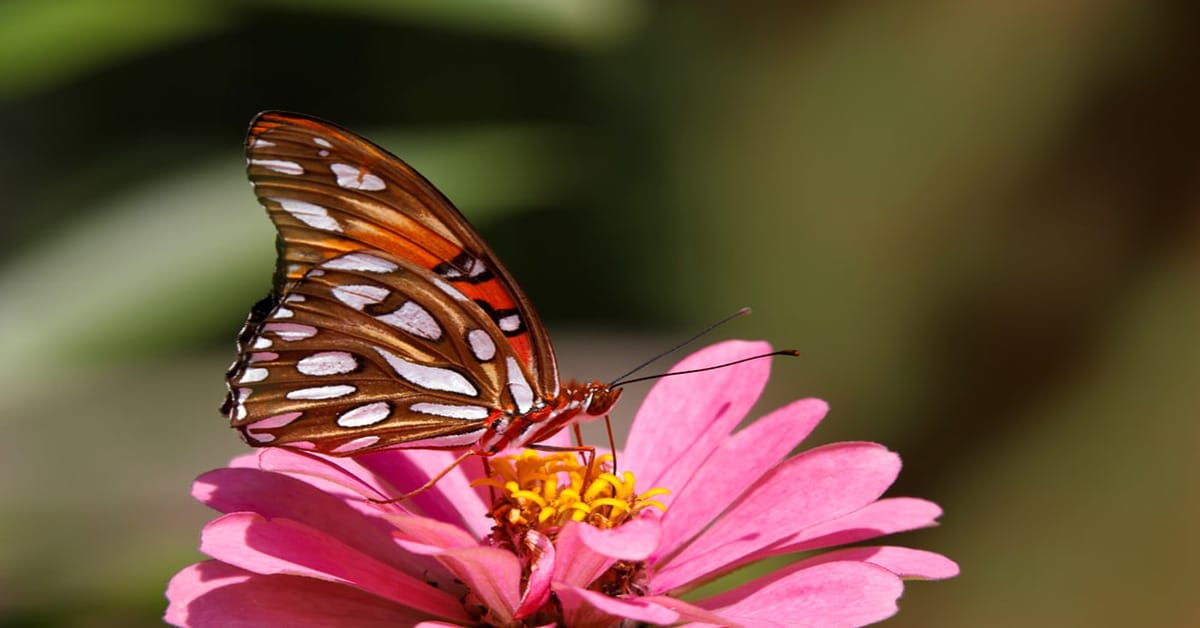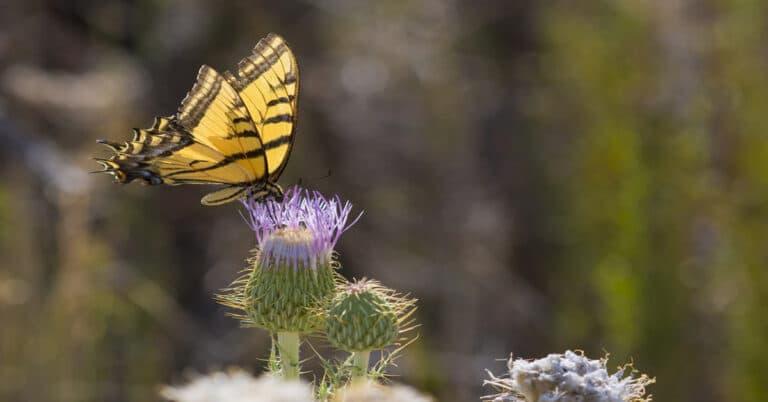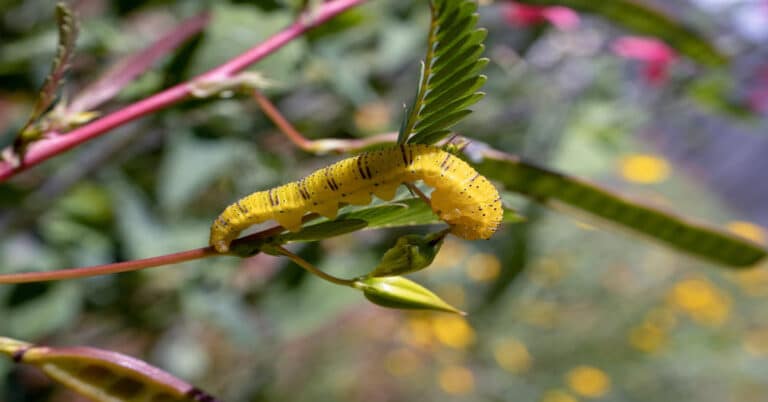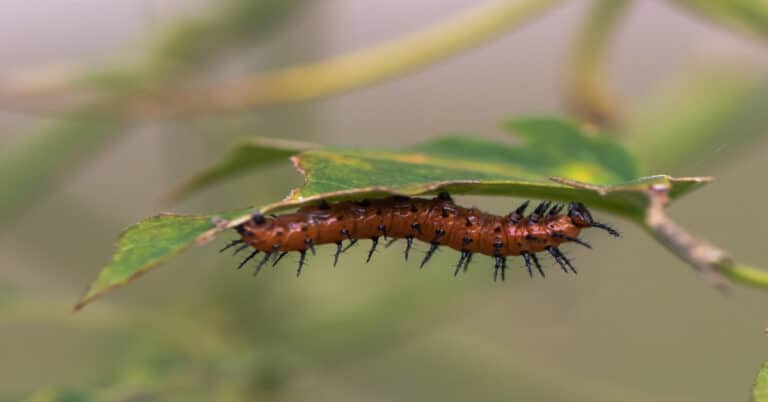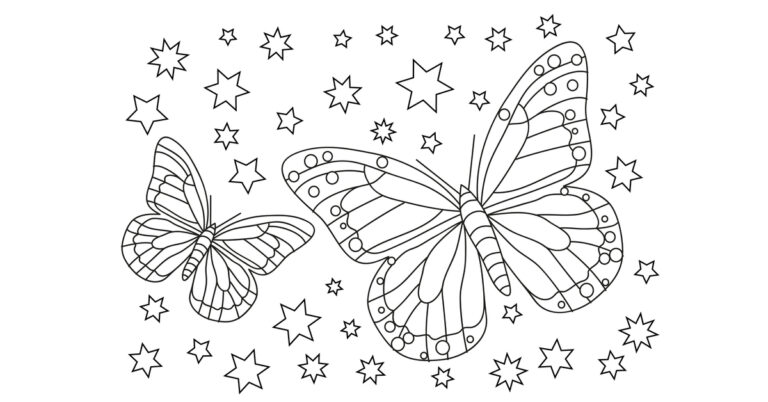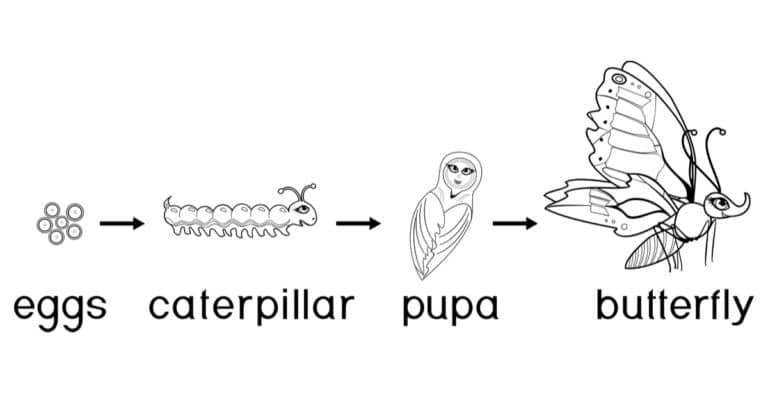List of Butterflies in Kentucky
The following list of butterflies are found in Kentucky. Clicking on the text link will show you a picture of the butterfly and which specific counties in Kentucky the butterfly is found in. Each link also provides more information about the butterfly’s identification and life history. This will help you decide which Butterfly Nectar Plants and Butterfly Host Plants you will want to plant when you create your butterfly garden. Simply find which butterflies are in your area, grow the plants the caterpillars like to eat, and plants that adult butterflies feed on! You can prolong the butterfly’s stay in your garden and draw in others by providing both the food and shelter they need.
Brush-footed Butterflies (Nymphalidae)
Admirals and Relatives (Limenitidinae)
‘Astyanax’ Red-spotted Purple (Limenitis arthemis astyanax)
Red-spotted Purple (Limenitis arthemis)
Viceroy (Limenitis archippus)
White Admiral (Limenitis arthemis arthemis)
Emperors (Apaturinae)
Hackberry Emperor (Asterocampa celtis)
Tawny Emperor (Asterocampa clyton)
Leafwings (Charaxinae)
Goatweed Leafwing (Anaea andria)
Longwings (Heliconiinae)
Aphrodite Fritillary (Speyeria aphrodite)
Diana (Speyeria diana)
Great Spangled Fritillary (Speyeria cybele)
Gulf Fritillary (Agraulis vanillae)
Meadow Fritillary (Boloria bellona)
Regal Fritillary (Speyeria idalia)
Silver-bordered Fritillary (Boloria selene)
Variegated Fritillary (Euptoieta claudia)
Milkweed Butterflies (Danainae)
Monarch (Danaus plexippus)
Queen (Danaus gilippus)
Snouts (Libytheinae)
American Snout (Libytheana carinenta)
True Brushfoots (Nymphalinae)
American Lady (Vanessa virginiensis)
Baltimore (Euphydryas phaeton)
Common Buckeye (Junonia coenia)
Compton Tortoiseshell (Nymphalis vaualbum)
Eastern Comma (Polygonia comma)
Gorgone Checkerspot (Chlosyne gorgone)
Gray Comma (Polygonia progne)
Green Comma (Polygonia faunus)
Malachite (Siproeta stelenes)
Milbert’s Tortoiseshell (Aglais milberti)
Mourning Cloak (Nymphalis antiopa)
Painted Lady (Vanessa cardui)
Pearl Crescent (Phyciodes tharos)
Question Mark (Polygonia interrogationis)
Red Admiral (Vanessa atalanta)
Silvery Checkerspot (Chlosyne nycteis)
Tawny Crescent (Phyciodes batesii)
White Peacock (Anartia jatrophae)
Harvesters (Miletinae)
Harvester (Feniseca tarquinius)
Metalmarks (Riodinidae)
Northern Metalmark (Calephelis borealis)
Swamp Metalmark (Calephelis muticum)
Parnassians and Swallowtails (Papilionidae)
Swallowtails (Papilioninae)
Black Swallowtail (Papilio polyxenes)
Eastern Tiger Swallowtail (Papilio glaucus)
Giant Swallowtail (Papilio cresphontes)
Ozark Swallowtail (Papilio joanae)
Palamedes Swallowtail (Papilio palamedes)
Pipevine Swallowtail (Battus philenor)
Polydamas Swallowtail (Battus polydamas)
Spicebush Swallowtail (Papilio troilus)
Zebra Swallowtail (Eurytides marcellus)
Skippers (Hesperiidae)
Giant-Skippers (Megathyminae)
Yucca Giant-Skipper (Megathymus yuccae)
Spread-wing Skippers (Pyrginae)
Columbine Duskywing (Erynnis lucilius)
Common Checkered-Skipper (Pyrgus communis)
Common Sootywing (Pholisora catullus)
Confusing Cloudywing (Thorybes confusis)
Dreamy Duskywing (Erynnis icelus)
Funereal Duskywing (Erynnis funeralis)
Golden Banded-Skipper (Autochton cellus)
Grizzled Skipper (Pyrgus centaureae)
Hayhurst’s Scallopwing (Staphylus hayhurstii)
Hoary Edge (Achalarus lyciades)
Horace’s Duskywing (Erynnis horatius)
Juvenal’s Duskywing (Erynnis juvenalis)
Long-tailed Skipper (Urbanus proteus)
Mottled Duskywing (Erynnis martialis)
Northern Cloudywing (Thorybes pylades)
Silver-spotted Skipper (Epargyreus clarus)
Sleepy Duskywing (Erynnis brizo)
Southern Cloudywing (Thorybes bathyllus)
Wild Indigo Duskywing (Erynnis baptisiae)
Zarucco Duskywing (Erynnis zarucco)
Courtesy of: Opler, Paul A., Harry Pavulaan, Ray E. Stanford, Michael Pogue, coordinators. 2006.
Butterflies and Moths of North America. Bozeman, MT: Mountain Prairie Information Node.

Having discovered a fondness for insects while pursuing her degree in Biology, Randi Jones was quite bugged to know that people usually dismissed these little creatures as “creepy-crawlies”.

